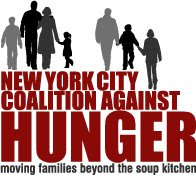Each election year, conservative politicians drag out a familiar refrain: low-income Americans, when granted access to basic rights like voting and receiving food stamp benefits, will inevitably exploit these rights and defraud government agencies en masse.
Data has repeatedly shown not only that these claims are false, but that conservative lawmakers have poured millions of dollars into fighting a battle with an all but non-existent enemy. “The conservative establishment has gone to great lengths to make it difficult for low-income Americans to register and cast votes,” says NYCCAH Executive Director Joel Berg in a recent Huffington Post editorial. “That is why the miniscule number of people who illegally vote is dwarfed by the tens of millions of eligible people prevented or discouraged from voting.”
It’s a scenario nearly identical to the food stamp (recently renamed SNAP) benefits application process here in New York City. Mayor Bloomberg continues to enforce the policy of finger-imaging all City food stamp recipients, despite the USDA’s statement that finger imaging does far more to detract eligible applicants from applying for food stamps than to weed out the miniscule number of fraudulent applications. In 2006, the City detected only 31 cases of food stamp fraud through finger-imaging, while, according to data from the Urban Institute, nearly 21,500 eligible New Yorkers were deterred from applying to food stamps by the finger-imaging policy. “There are a lot of bad government policies out there, but few rise to the level of sheer stupidity as this one does,” says Berg.
Ignore for a moment the fact that rich Americans who accept government funds are not made to submit to finger imaging. Or that over one in five New York City children continue to live in homes that can’t afford enough food. Economic data alone attests to the wastefulness of these policies. In 2006, New York City spent $800,000 on finger-imaging. That’s $25,806 on each case of detected fraud.
For families deterred from receiving even the minimum food stamp benefit, it’s clear where the real hoax lies.



